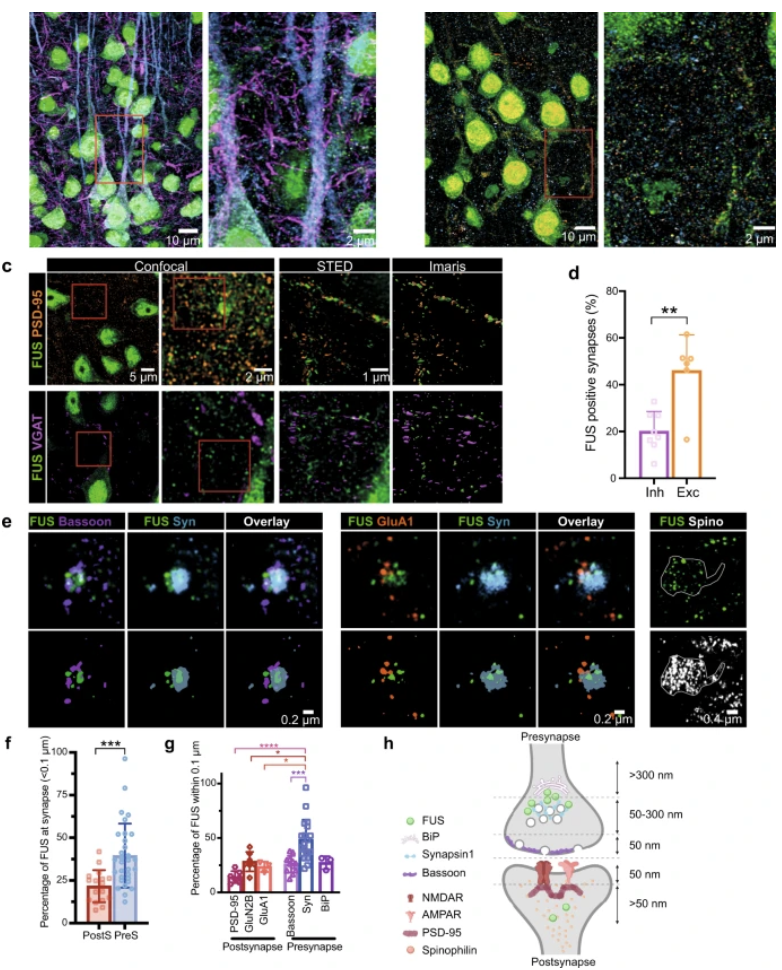The Polymenidou group shows that synaptic FUS accumulation triggers early misregulation of synaptic RNAs in an ALS mouse model
Despite the central role of the RNA-binding protein FUS in neurodegenerative diseases, little is known about its function in specialised neuronal compartments, such as synapses. This study investigates a molecular mechanism triggering early dysfunction in neurons of patients suffering from a familial form of amyotrophic lateral sclerosis (ALS), linked to mutations in FUS. ALS-FUS patients develop a particularly aggressive type of ALS, with early disease onset and rapid progression.
This study identified for the first-time synaptic RNA targets of FUS at the synapses, by combining cortical synaptoneurosome preparations with CLIP-seq in ALS-FUS mice. Super-resolution imaging revealed that the localisation of FUS within synapses occurs predominantly near the vesicle reserve pool of presynaptic sites. While synaptic FUS elevation was accompanied by mild and transient synaptic changes, RNA-seq analysis revealed age-dependent changes in synaptic RNA composition, including glutamatergic and GABAergic synapses. These results point to a critical role for FUS at the synapse and indicate that increased synaptic FUS localisation in ALS-FUS mice triggers early alterations of synaptic RNA content and misregulation of the GABAergic network. Furthermore, these early synaptic changes correlate with the behavioral dysfunctions that these mice develop (Scekic-Zahirovic, Sanjuan-Ruiz et al., 2021)
See Sahadevan, Hembach et al, Nature Communications, published back-to-back with Scekic-Zahirovic, Sanjuan-Ruiz et al, Nature Communications.
